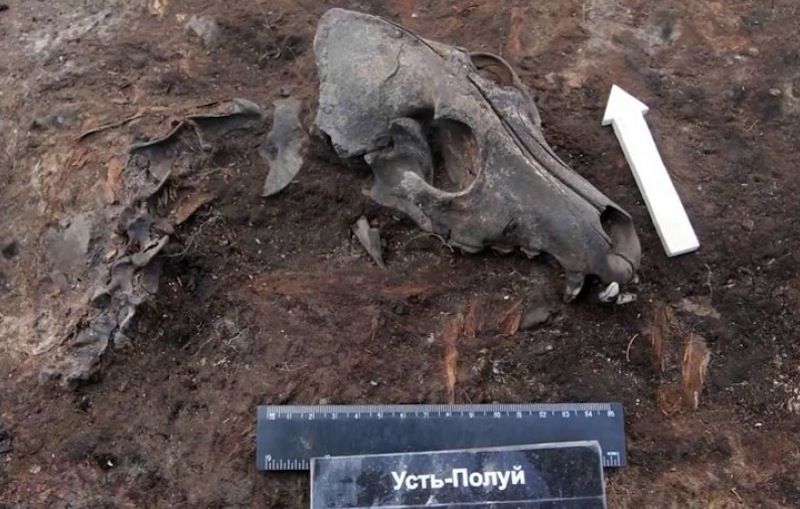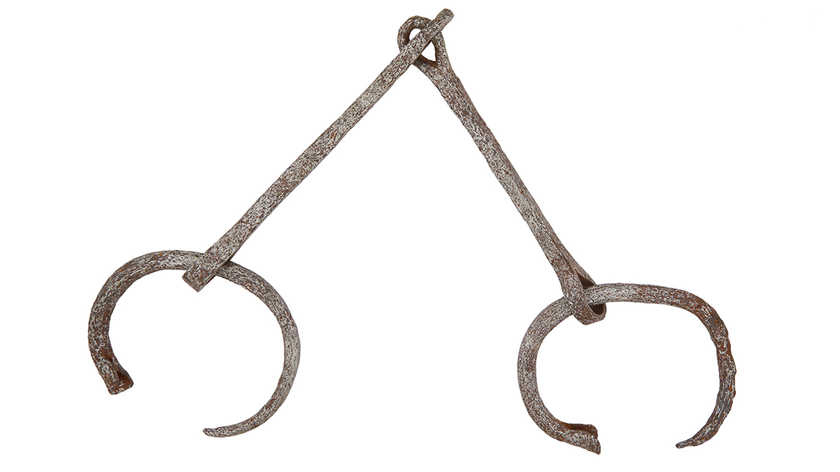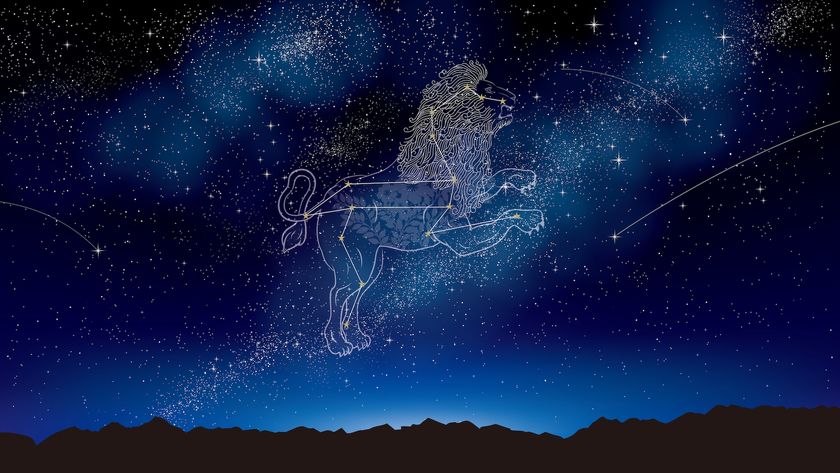2,000-Year-Old Dog Graveyard Discovered in Siberia

The carefully buried remains of five dogs were recently found in a 2,000-year-old doggy graveyard near the Arctic Circle in Siberia, according to archaeologists.
This discovery at the Ust-Polui archaeological site, in Salekhard, Russia, reveals close relationships between the region's people and their animal "best friends" two millennia B.C. The dogs likely served as pets, workers and sources of food — and possibly as sacrificial offerings in religious ceremonies, the researchers said.
"The role of dogs at Ust-Polui is really complex and variable," Robert Losey, an archaeologist at the University of Alberta in Canada, wrote in an email to Live Science from Salekhard, where he is carrying out fieldwork at Ust-Polui. [See photos of the prehistoric dog graveyard in Siberia]
"The most striking thing is that the dog remains are really abundant compared to all other sites in the Arctic — there are over 115 dogs represented at the site," Losey said. "Typically, sites have only a few dog remains — 10 at most."
Working dogs
The dogs were likely involved in various tasks in the ancient Arctic village, including pulling sleds, he said. The remains of two sleds, as well as a carved bone knife handle thought to depict a sled dog in a harness, have been found at the site.
"Some [dogs] were probably also used in hunting, for reindeer and birds, the remains of which were both abundant at the site," Losey said.
Parts of a reindeer harness had also been found at Ust-Polui, he added, and dogs may have been used to herd reindeer, as is still done today by some communities in the region.
Sign up for the Live Science daily newsletter now
Get the world’s most fascinating discoveries delivered straight to your inbox.
But despite evidence that the dogs worked with people and other animals, it was also clear that many of the dogs at Ust-Polui had been butchered and probably eaten, Losey said. Many of the dog bones had cut marks on them, and were found scattered around the site in the same way as the bones of other food animals, such as deer and birds, he said.
Some of the dog consumption may have been related to sacrifices or rituals, or even feasting, Losey noted. In fact, "at one place in the site, the heads of 15 dogs were piled together, all with their brain cases broken open in the same manner," he said.
He added that the sacrificing of dogs was well documented among indigenous people in this region of Siberia, "and is done to appease spirits, or to ensure community health, and so on."
Prehistoric pets
But though it might have been a dog's life for most of the canine population of Ust-Polui, a few top dogs seem to have enjoyed special treatment, the archaeologists said. [10 Things You Didn't Know About Dogs]
Of the more than 115 dogs that archaeologists identified among the animal bones at Ust-Polui, the remains of just five dogs were found carefully buried in a group near one edge of the site, Losey said.
This separation likely indicates close bonds between some people and some dogs in the ancient village, he said.
Each of the prehistoric doggy graves contained the entire dog skeleton, laid on its side in a shallow pit, similar to three human burials at the site, and they showed no signs of butchery or of being intentionally killed, the researchers found.
"The only thing that distinguishes them from the human burials is their location. No other animals at Ust-Polui were treated like this," Losey said.
Ancient friendship
Losey started working with the dog remains from Ust-Polui three years ago, as part of his work studying the ancient relationships between people and dogs in the world's northern regions.
In 2013 in the journal PLOS ONE, Losey published the results of his research into dog burials, dated to around 8,000 years ago, from archaeological sites in the Lake Baikal region of Siberia.
Some of the dogs from Lake Baikal were buried with decorated collars and what appeared to be grave goods, such as pottery jars and wooden spoons.
Losey said the differences between the two sites showed how people’s relationships with dogs varied among cultures over the estimated 15,000 years since dogs evolved from wolves.
"At Baikal, we have no evidence of dog consumption or sacrifice at all, and many of the dogs there are from carefully made burials," Losey said.
Although tests on the dog remains at both sites suggested they would have been similar to Siberian huskies, the dogs at Ust-Polui were much smaller, with most weighing less than 50 lbs. (22 kilograms) and standing only 1.6 feet (0.5 meters) tall at the shoulder, Losey said.
Original article on Live Science.
Tom Metcalfe is a freelance journalist and regular Live Science contributor who is based in London in the United Kingdom. Tom writes mainly about science, space, archaeology, the Earth and the oceans. He has also written for the BBC, NBC News, National Geographic, Scientific American, Air & Space, and many others.










